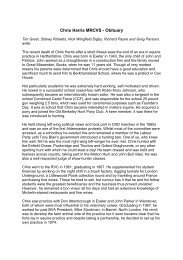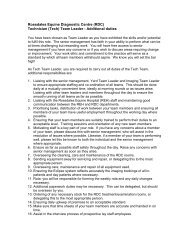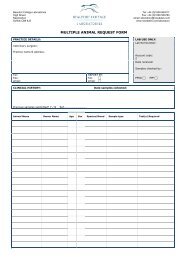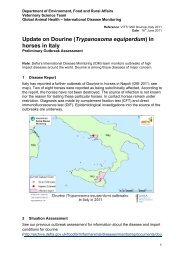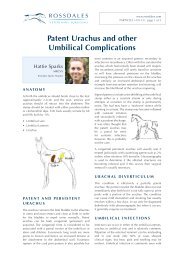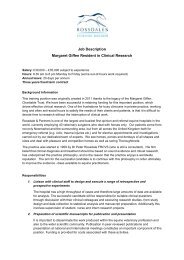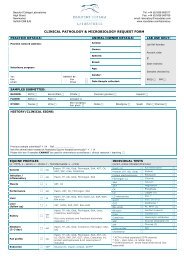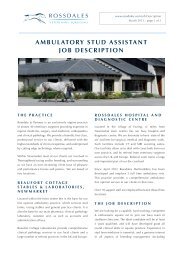EQUINE CLINICAL PATHOLOGY - Rossdale & Partners
EQUINE CLINICAL PATHOLOGY - Rossdale & Partners
EQUINE CLINICAL PATHOLOGY - Rossdale & Partners
Create successful ePaper yourself
Turn your PDF publications into a flip-book with our unique Google optimized e-Paper software.
G u i d e t o e q u i n e c l i n i c a l p a t h o l o g y<br />
Peritoneal fluid<br />
Analysis of peritoneal fluid is particularly<br />
useful as a diagnostic aid in cases of colic,<br />
weight loss and other suspected abdominal<br />
disease. It may be of particular value in<br />
helping to make the decision for surgical<br />
intervention.<br />
To perform a peritoneal tap, the skin over<br />
the site of puncture should be clipped<br />
and prepared as for surgical intervention.<br />
With the horse restrained in the standing<br />
position, a 19 gauge, 1.5 or 2.0 inch<br />
needle or following local anaesthesia and a<br />
stab incision, a 7.5 cm. blunt teat cannula<br />
(operator preference) is carefully advanced<br />
through the skin at the lowest part of the<br />
abdomen and then through the linea alba.<br />
If fluid is not immediately forthcoming, the<br />
needle may be rotated or the tap may be<br />
repeated at other sites.<br />
In foals, prior ultrasound scan examination<br />
of the abdomen is recommended to<br />
help visualise abnormalities and prevent<br />
inadvertent penetration of the intestine.<br />
Examination of the ventral midline will help<br />
to locate the spleen and to find a ‘pocket’ of<br />
peritoneal fluid to guide productive needle<br />
puncture. Similarly, if fluid is not obtained<br />
in adult horses using the blind technique<br />
described above, ultrasonic guidance may<br />
be helpful.<br />
A turbid and homogeneously blood stained<br />
sample may indicate abdominal vascular<br />
embarrassment. A white, turbid fluid may<br />
suggest peritonitis. A brown, foul smelling<br />
fluid may indicate intestinal rupture or an<br />
intestinal tap. A thick and heavily blood<br />
stained sample suggests a splenic tap.<br />
Total nucleated cell counts



